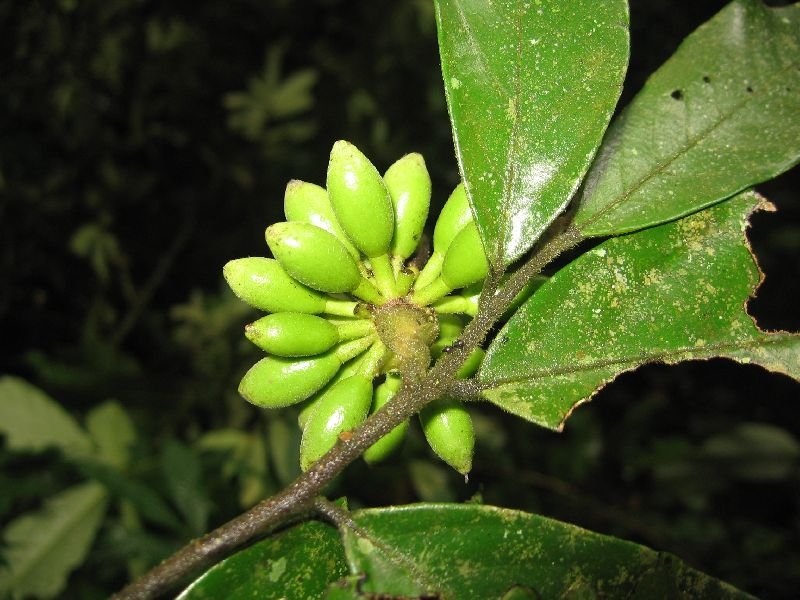NAME: Enantia chlorantha
FAMILY: Rubiaceae
COMMON NAMES: White-clawed soursop, Wild cherry
LOCAL NAMES: Cusumbo, Guamo blanco
MORPHOLOGICAL DESCRIPTION: Enantia chlorantha is a small to medium-sized evergreen tree that typically grows up to 15 meters in height. It has a straight, slender trunk and a dense, rounded crown. The leaves are glossy, leathery, and elliptical in shape, measuring about 15-25 centimeters in length. They have prominent veins and a dark green color on the upper surface, while the lower surface is pale green. The tree produces small, fragrant white flowers that develop into spherical fruits with a yellowish-green color when ripe.
USEFUL PART(s): The bark and leaves of Enantia chlorantha are the most commonly used parts.
GENERAL USES:
Medicinal Purposes: Enantia chlorantha has a long history of use in traditional medicine. The bark and leaves contain various bioactive compounds, including alkaloids, tannins, and flavonoids. It is used to treat a range of ailments such as fever, malaria, diarrhea, dysentery, stomachaches, and skin infections. Additionally, it is known for its antimalarial, antipyretic, and analgesic properties.
Timber: The wood of Enantia chlorantha is hard, durable, and resistant to insect attacks. It is utilized for making furniture, cabinetry, tool handles, and construction materials.
GEOGRAPHIC DISTRIBUTION: Enantia chlorantha is native to tropical regions of Central and West Africa. It can be found in countries such as Nigeria, Cameroon, Ghana, Ivory Coast, and Sierra Leone.
WHY IS IT GREEN? Enantia chlorantha, like most plants, appears green due to the presence of chlorophyll in its leaves. Chlorophyll is a pigment that plays a crucial role in the process of photosynthesis, where plants convert sunlight into energy, using carbon dioxide and water to produce glucose and oxygen. The green color of chlorophyll reflects the wavelengths of light that are absorbed and utilized by plants for this energy conversion process.
ENVIRONMENTAL IMPACT: Enantia chlorantha has a positive environmental impact due to its ability to contribute to forest ecosystems. It provides habitat and food for various animal species, supports biodiversity, and helps regulate local climate. Additionally, its medicinal properties offer sustainable alternatives to synthetic drugs, reducing the pressure on other plant species and potentially contributing to conservation efforts.
FUN FACT: Enantia chlorantha is known for its bitter taste, which is attributed to the presence of alkaloids in its bark and leaves. The bitter taste acts as a deterrent against herbivores, protecting the tree from excessive grazing.
Further Reading:
"Traditional Uses, Phytochemistry, and Pharmacology of Enantia chlorantha Oliv. (Annonaceae): A Comprehensive Review." By A.J. Loubens and others.
"Antimalarial Activity and Toxicity of Crude Extracts from Enantia chlorantha Oliver (Annonaceae)." By A.S. Mohamed and others.
"Phytochemical and Ethnobotanical Studies of Enantia chlorantha." By M.A. Teguia and others.


